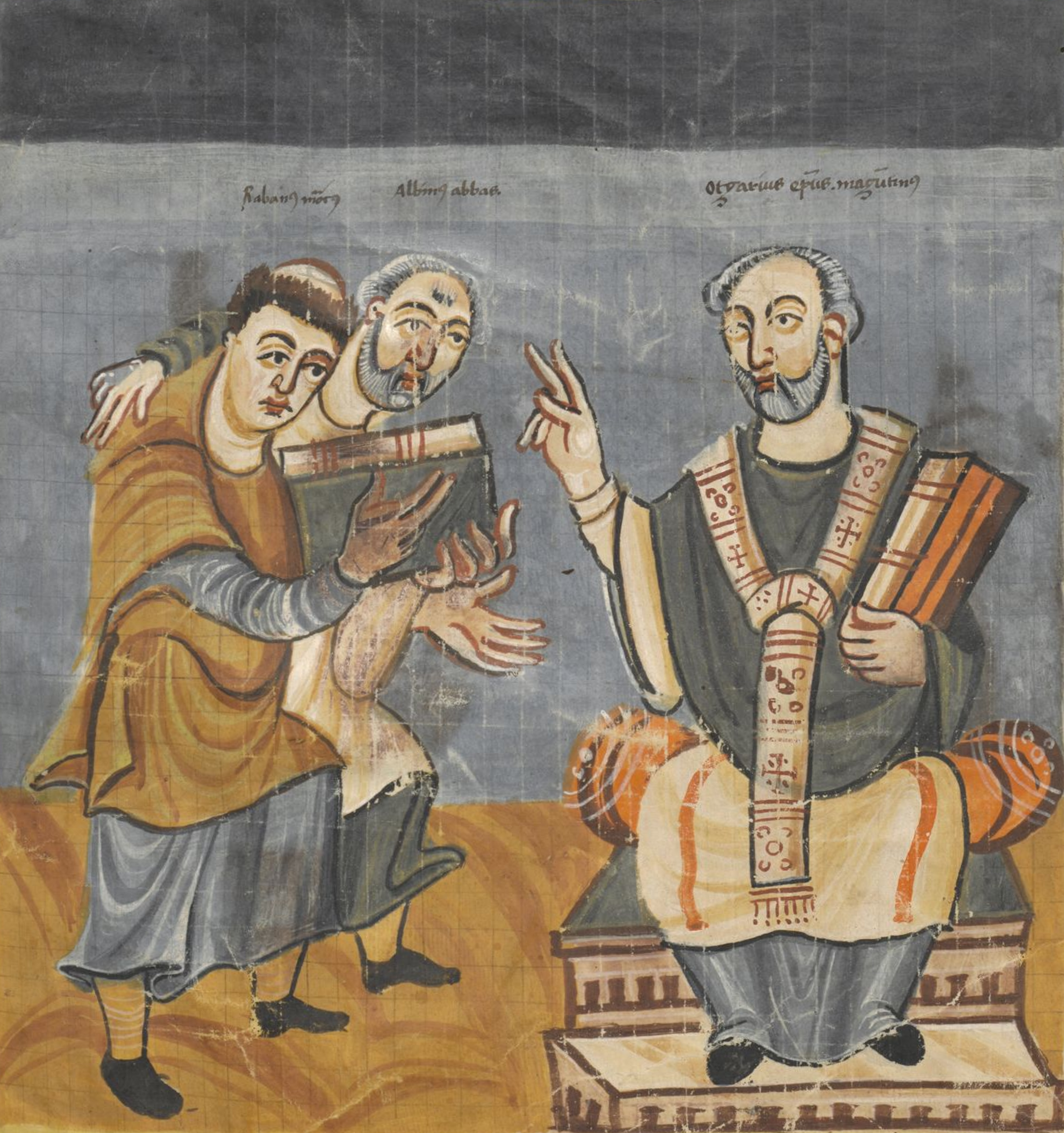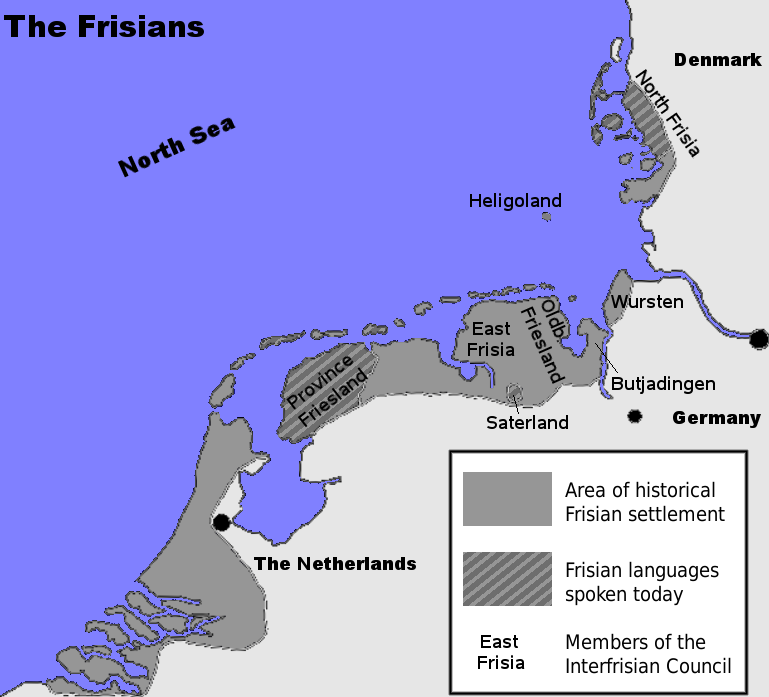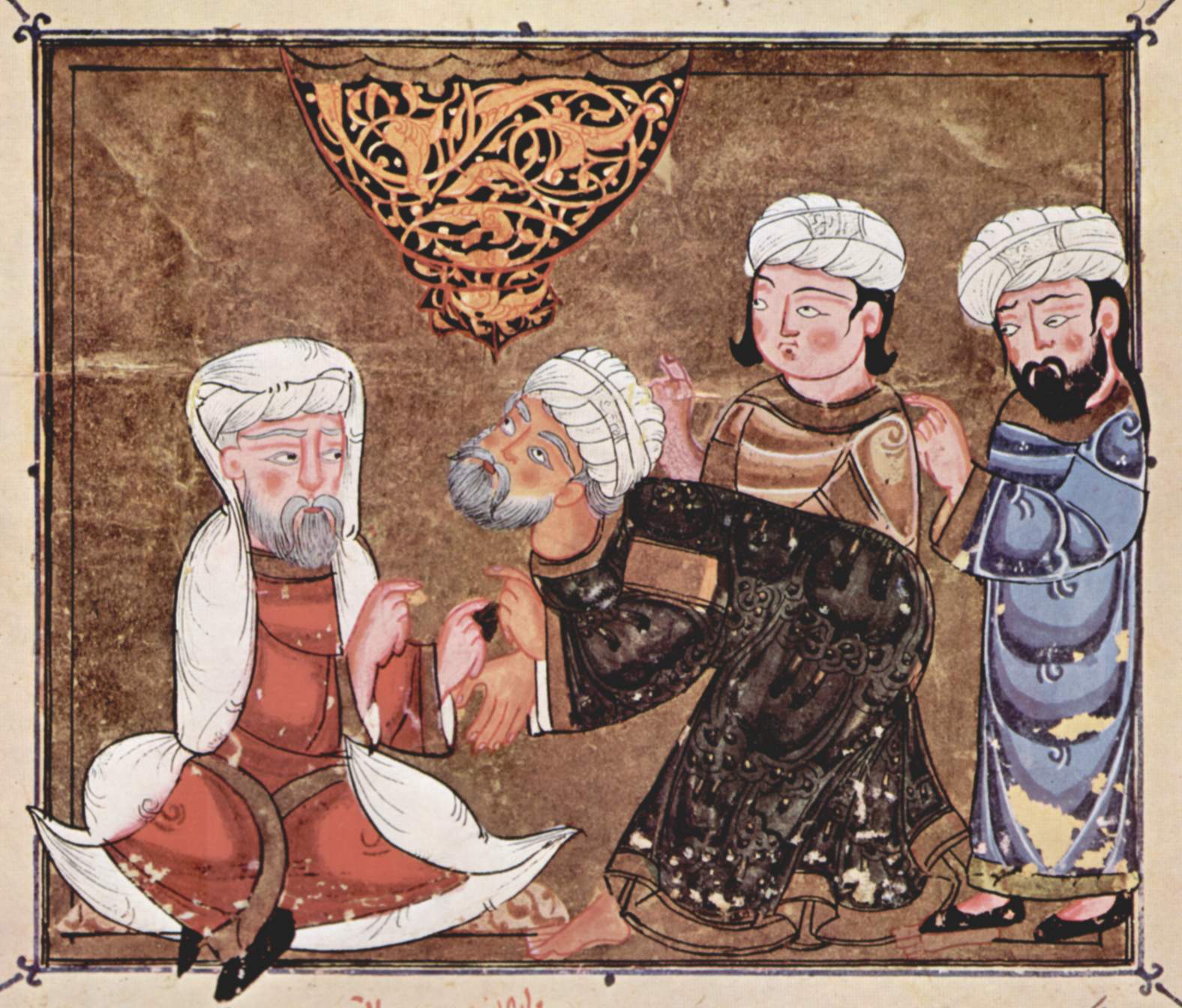|
Aurea Of Córdoba
Aurea of Córdoba (810–856) was a saint, nun, and martyr, part of the Martyrs of Córdoba, a group of 48 Christian martyrs executed during Muslim rule in al-Andalus. Aurea's feast day is 19 July. Life Aurea was a widow who had been born into an Arab noble family; her father was a Muslim from Seville, and three members of her family were qadis, or Arab judges. After her brothers John and Adulphus were executed for their apostasy from Islam in 825, Aurea went to live with her mother Artemia, who was also a nun, at the convent at Cuteclara for 30 years. She had also witnessed the deaths of three Christians who had been connected with her convent in the early 850s. According to historian Kenneth B. Wolf, Aurea remained at Cuteclara without the knowledge of her relatives, but historians Jessica Coope and Reginald Haines stated that Aurea's relatives ignored her Christian faith, even though it was well known, for most of her adult life. Wolfe also stated that Aurea's Muslim relati ... [...More Info...] [...Related Items...] OR: [Wikipedia] [Google] [Baidu] |
Martyr
A martyr (, ''mártys'', 'witness' Word stem, stem , ''martyr-'') is someone who suffers persecution and death for advocating, renouncing, or refusing to renounce or advocate, a religious belief or other cause as demanded by an external party. In colloquial usage, the term can also refer to any person who suffers a significant consequence in protest or support of a cause. In the martyrdom narrative of the remembering community, this refusal to comply with the presented demands results in the punishment or execution of an individual by an oppressor. Accordingly, the status of the 'martyr' can be considered a posthumous title as a reward for those who are considered worthy of the concept of martyrdom by the living, regardless of any attempts by the deceased to control how they will be remembered in advance. Insofar, the martyr is a relational figure of a society's boundary work that is produced by collective memory. Originally applied only to those who suffered for their religious b ... [...More Info...] [...Related Items...] OR: [Wikipedia] [Google] [Baidu] |
Kenneth Baxter Wolf
Kenneth Baxter Wolf (born June 1, 1957) is an American historian and scholar of medieval studies. Biography Wolf is the John Sutton Miner Professor of History and Professor of Classics at Pomona College in Claremont, California, where he has taught since 1985. Works Authored *''Christian Martyrs in Muslim Spain'' (Cambridge University Press, 1988) *''The Normans and Their Historians in Eleventh-Century Italy'' (University of Pennsylvania Press, 1995) *''The Poverty of Riches. St. Francis of Assisi Reconsidered'' (Oxford University Press Oxford University Press (OUP) is the publishing house of the University of Oxford. It is the largest university press in the world. Its first book was printed in Oxford in 1478, with the Press officially granted the legal right to print books ..., 2003) Translated *''Conquerors and Chroniclers of Early Medieval Spain'' (Liverpool University Press, 1990) *''The Deeds of Count Roger and of His Brother Duke Robert Guiscard'' (University of ... [...More Info...] [...Related Items...] OR: [Wikipedia] [Google] [Baidu] |
9th-century Christian Saints
The 9th century was a period from 801 (represented by the Roman numerals DCCCI) through 900 (CM) in accordance with the Julian calendar. The Carolingian Renaissance and the Viking raids occurred within this period. In the Middle East, the House of Wisdom was founded in Abbasid Baghdad, attracting many scholars to the city. The field of algebra was founded by the Muslim polymath al-Khwarizmi. The most famous Islamic scholar Ahmad ibn Hanbal was tortured and imprisoned by Abbasid official Ahmad ibn Abi Du'ad during the reign of Abbasid caliph al-Mu'tasim and caliph al-Wathiq. In Southeast Asia, the height of the Mataram Kingdom happened in this century, while Burma would see the establishment of the major kingdom of Pagan. Tang China started the century with the effective rule under Emperor Xianzong and ended the century with the Huang Chao rebellions. In America, the Maya experienced widespread political collapse in the central Maya region, resulting in internecin ... [...More Info...] [...Related Items...] OR: [Wikipedia] [Google] [Baidu] |
Spanish Roman Catholic Saints
Spanish might refer to: * Items from or related to Spain: ** Spaniards are a nation and ethnic group indigenous to Spain **Spanish language, spoken in Spain and many countries in the Americas ** Spanish cuisine ** Spanish history ** Spanish culture ** Languages of Spain, the various languages in Spain Other places * Spanish, Ontario, Canada * Spanish River (other), the name of several rivers * Spanish Town, Jamaica Other uses * John J. Spanish (1922–2019), American politician * "Spanish" (song), a single by Craig David, 2003 See also * * * Español (other) * Spain (other) * España (other) * Espanola (other) * Hispania, the Roman and Greek name for the Iberian Peninsula * Hispanic, the people, nations, and cultures that have a historical link to Spain * Hispanic (other) * Hispanism * Spain (other) * National and regional identity in Spain * Culture of Spain The culture of Spain is influenced b ... [...More Info...] [...Related Items...] OR: [Wikipedia] [Google] [Baidu] |
856 Deaths
__NOTOC__ Year 856 ( DCCCLVI) was a leap year starting on Wednesday of the Julian calendar. Events By place Byzantine Empire * March 15 – Emperor Michael III overthrows the regency of his mother Theodora. He appoints his uncle Bardas as the ''de facto'' regent and co-ruler of the Byzantine Empire.. Europe * King Charles the Bald cedes the county of Maine to Erispoe, ruler (duke) of Brittany—this in return for an alliance against the Vikings. * King Ordoño I of Asturias is said to have begun the repopulation of the town of León in the northwest of Spain (approximate date). Britain * October 1 – King Æthelwulf of Wessex marries the 12- or 13-year-old Judith, daughter of Charles the Bald, at Verberie (Northern France). She is crowned queen and anointed by Hincmar, archbishop of Reims. The marriage is a diplomatic alliance between Wessex and the West Frankish Kingdom.Paul Hill (2009). ''The Viking Wars of Alfred the Great'', p. 18. . * Winter &nd ... [...More Info...] [...Related Items...] OR: [Wikipedia] [Google] [Baidu] |
810 Births
__NOTOC__ Year 810 ( DCCCX) was a common year starting on Tuesday of the Julian calendar. Events By place Byzantine Empire * Spring – The Venetian dukes change sides again, submitting to King Pepin, under the authority of his father Charlemagne, who then proceeds to take Venice. Emperor Nikephoros I sends a Byzantine fleet to Dalmatia, prompting Pepin to withdraw to the mainland. A legate is dispatched to Venice, where he deposes the turncoat dukes, before continuing on to Aachen, to negotiate a peace with Charlemagne. Charlemagne recognises Byzantine dominance over Venice and Dalmatia in the Adriatic Sea. Europe * King Godfred of the Danes leads 200 Viking ships to plunder the Frisian coast, and forces the merchants to pay 100 pounds of silver. He claims Northern Frisia as Danish territory. * Godfred is killed by one of his housecarls, and is succeeded by Hemming. According to Notker of Saint Gall, the bodyguard who murdered Godfred is possibly one ... [...More Info...] [...Related Items...] OR: [Wikipedia] [Google] [Baidu] |
Guadalquivir
The Guadalquivir (, also , , ) is the fifth-longest river in the Iberian Peninsula and the second-longest river with its entire length in Spain. The Guadalquivir is the only major navigable river in Spain. Currently it is navigable from Seville to the Gulf of Cádiz, but in Roman times it was navigable from Córdoba. Geography The river is long and drains an area of about . It flows through Córdoba and Seville and reaches the sea at Sanlúcar de Barrameda, flowing into the Gulf of Cádiz in the Atlantic Ocean. Course The course of the Guadalquivir is divided into three parts. This division is based on the main course of the river and its confluence with other rivers. The Guadalquivir originates at an elevation of about 1,350 meters above sea level in a place known as Cañada de las Fuentes, in the Sierra de Cazorla mountain range. The upper course of the river runs from the source of the Guadalquivir roughly to Mengíbar. It includes its junction with the Guadali ... [...More Info...] [...Related Items...] OR: [Wikipedia] [Google] [Baidu] |
Denial Of Peter
The Denial of Peter (or Peter's Denial) refers to three acts of denial of Jesus by the Apostle Peter as described in all four Gospels of the New Testament. All four Canonical Gospels state that during Jesus's Last Supper with his disciples, he predicted that Peter would deny knowledge of him, stating that Peter would disown him before the rooster crowed the next morning. Following the arrest of Jesus, Peter denied knowing him three times, but after the third denial, he heard the rooster crow and recalled the prediction as Jesus turned to look at him. Peter then began to cry bitterly. This final incident is known as the Repentance of Peter. The turbulent emotions behind Peter's denial and later repentance have been the subject of major works of art for centuries. Examples include Caravaggio's '' Denial of Saint Peter'', which is now at the Metropolitan Museum of Art. The incidents have also inspired segments in various films related to the life and death of Jesus Christ (for i ... [...More Info...] [...Related Items...] OR: [Wikipedia] [Google] [Baidu] |
Saint Peter
Saint Peter (born Shimon Bar Yonah; 1 BC – AD 64/68), also known as Peter the Apostle, Simon Peter, Simeon, Simon, or Cephas, was one of the Twelve Apostles of Jesus and one of the first leaders of the Jewish Christian#Jerusalem ekklēsia, early Christian Church. He appears repeatedly and prominently in Gospel#Canonical gospels, all four New Testament gospels, as well as the Acts of the Apostles. Catholic Church, Catholic and Eastern Orthodoxy, Orthodox tradition treats Peter as the first bishop of Rome – or List of popes, pope – and also as the first bishop of Antioch. Peter's History of the papacy, leadership of the early believers is estimated to have spanned from AD 30 or 33 to his death; these dates suggest that he could have been the longest-reigning pope, for anywhere from 31 to 38 years; however, this has never been verified. According to Apostolic Age, Christian tradition, Peter was crucified in Rome under Emperor Nero. The ancient Christian churches all venera ... [...More Info...] [...Related Items...] OR: [Wikipedia] [Google] [Baidu] |
Qadi
A qadi (; ) is the magistrate or judge of a Sharia court, who also exercises extrajudicial functions such as mediation, guardianship over orphans and minors, and supervision and auditing of public works. History The term '' was in use from the time of Muhammad during the early history of Islam, and remained the term used for judges throughout Islamic history and the period of the caliphates. While the and played the role in elucidation of the principles of Islamic jurisprudence () and the Islamic law (), the qadi remained the key person ensuring the establishment of justice on the basis of these very laws and rules. Thus, the qadi was chosen from amongst those who had mastered the sciences of jurisprudence and law. The office of qadi continued to be a very important one in every principality of the caliphates and sultanates of the various Muslim empires over the centuries. The rulers appointed a qadi in every region, town, and village for judicial and administrative cont ... [...More Info...] [...Related Items...] OR: [Wikipedia] [Google] [Baidu] |
Córdoba, Spain
Córdoba ( ; ), or sometimes Cordova ( ), is a city in Andalusia, Spain, and the capital of the Province of Córdoba (Spain), province of Córdoba. It is the third most populated Municipalities in Spain, municipality in Andalusia. The city primarily lies on the right bank of the Guadalquivir in the south of the Iberian Peninsula. Once a Colonia (Roman), Roman colonia, it was taken over by the Visigothic Kingdom followed by the Muslim conquest of the Iberian Peninsula, Muslim conquest in the eighth century. Córdoba became the capital of the Umayyad state of Córdoba, Emirate and then Caliphate of Córdoba, from which the Umayyad dynasty ruled all of al-Andalus until 1031. Under Umayyad rule, Córdoba was transformed into a centre of education and learning, and by the 10th century it had grown to be the second-largest city in Europe. The caliphate experienced a manifold political crisis in the early 11th century that brought about state collapse. Following the Siege of Córdoba ( ... [...More Info...] [...Related Items...] OR: [Wikipedia] [Google] [Baidu] |
Seville
Seville ( ; , ) is the capital and largest city of the Spain, Spanish autonomous communities of Spain, autonomous community of Andalusia and the province of Seville. It is situated on the lower reaches of the Guadalquivir, River Guadalquivir, in the southwest of the Iberian Peninsula. Seville has a municipal population of about 701,000 , and a Seville metropolitan area, metropolitan population of about 1.5 million, making it the largest city in Andalusia and the List of metropolitan areas in Spain, fourth-largest city in Spain. Its old town, with an area of , contains a UNESCO World Heritage Site comprising three buildings: the Alcázar of Seville, Alcázar palace complex, the Seville Cathedral, Cathedral and the General Archive of the Indies. The Seville harbour, located about from the Atlantic Ocean, is the only river port in Spain. The capital of Andalusia features hot temperatures in the summer, with daily maximums routinely above in July and August. Seville was founded ... [...More Info...] [...Related Items...] OR: [Wikipedia] [Google] [Baidu] |








